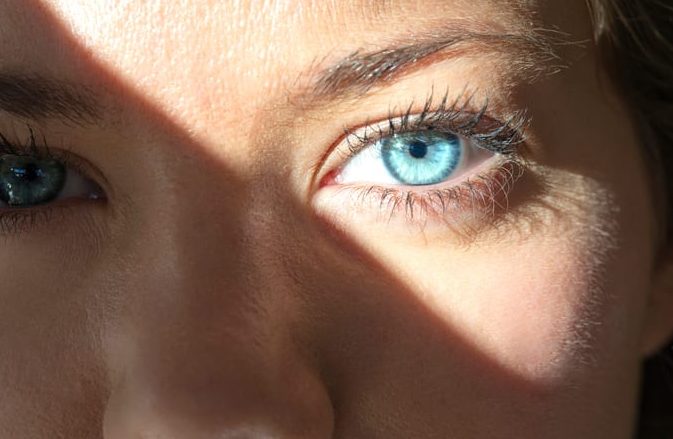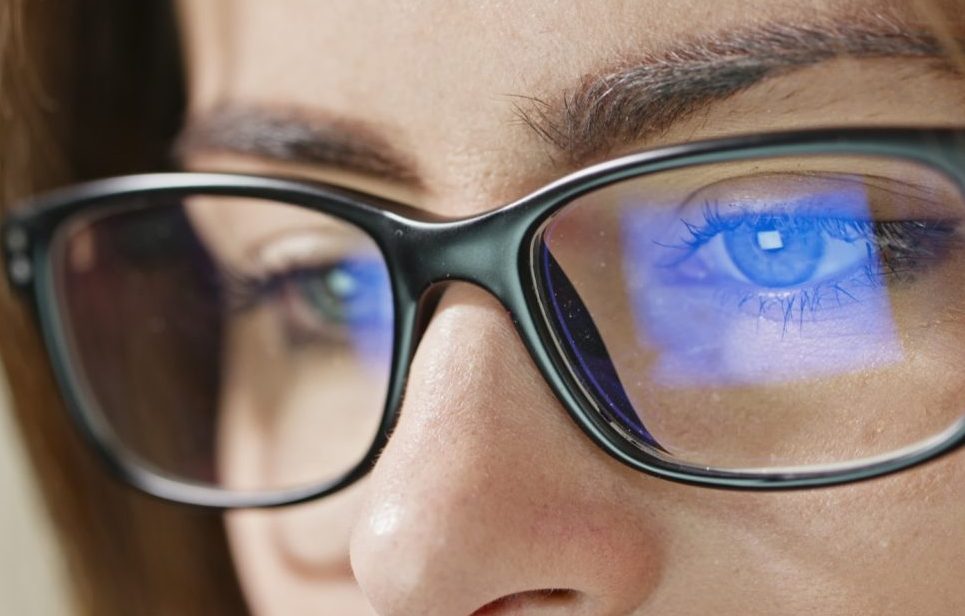Are your eyes tired quickly? Do you sometimes get headaches or eye pain when you use the computer?
Find out what you can do to relax your vision when using the computer.
The following information is for you if you feel that computer work can cause vision problems.
Eyes are designed for multi-focal, three-dimensional vision that is constantly changing.
It seems that eye fatigue can be caused by prolonged sitting in front of a computer for too long.
It’s not the computer that can cause vision problems, but how you use the computer. Do you strain your eyes or relax them?
What else can a bad computer program do to your vision?
The cornea, which is the outer lens of your eye, accounts for 80% of the refractive powers of the eye’s lenses system.
However, wearing glasses for long periods of time, especially at a computer, can cause the natural blink rate to drop and lead to dependence on artificial tears.
Tears contain nutrients that nourish the cornea. When you blink, tears act as a “lubricant” on the cornea and are spread over its surface.
When you are working on the computer, your eyes become tired. This can lead to dry eyes.
If you blink too little, your eyes won’t get enough moisture and nutrients.
These conditions can cause you to experience the following symptoms:
- Eyeball burning or itching
- Feeling of sand under your eyes
- Eyes that are too dry or heavy
- Myopia and astigmatism can appear.
Is the quality of light affecting the state of vision?
It is well-known that light has an effect on the pupil’s size. In bright sunlight, the pupil shrinks while in darkness it expands.

This is how the pupil controls the amount of light entering the eyes.
The QUALITY of light also influences how the pupil controls the amount of light entering the eyes. That full-spectrum light is like sunlight.
This quality of light also contributes to the maintenance of balance in the nervous system.
What’s the purpose of anti-reflective sunglasses?
The glasses reflect part of the ultraviolet spectrum of light emitted from the sun and the light emitted through computer protection glasses.
The nervous system must compensate for this loss in the spectrum of sunlight.
The loss of light spectrum can cause the natural balance of the body and eyes to be disrupted.

Protective glasses reflect light from the computer. The pupil stays in one fixed position.
This is because a portion of the visible spectrum does not reach the eye and the pupil is not stimulated to contract.
The pupil’s relaxation and contraction training gradually wears off, leaving it in a static state with an increased diameter.
The following can be felt when the pupil is open wide for a prolonged time:
High eye strain and PHOTOPHOTOPHOBIA is a condition that causes sensitivity to bright lights.
The sensitivity to light will be felt when you are outdoors, being sensitive to natural sunlight – which will seem stronger than it actually is and you may want to squint – or indoors, feeling that the monitor’s light tires you.
The anti-reflective glasses make the image “more pleasant” when worn. However, another side effect is that the brain sends a message to the eyes to blink less frequently.
The muscles around the eyelids and pupil become weaker, and eventually the eyes feel tired and strained. It is possible to lose focus on what you are doing on the computer. This can be solved by glasses with computer protection.
However, as you probably know, glasses can become addictive over time. Your eyes will also become more sensitive to light, even natural light.
ATTENTION: Anti-reflective glasses are not recommended for people who have had trouble seeing at the computer.

Retired, relaxed computer view
To maintain clear vision even when you are working long hours at the computer, and not worry about needing protection glasses, I recommend the following steps:
Step 1: Blink normaly and consciously five times every ten minutes.
Step 2: If you feel any fatigue, just release it. Every 15 minutes, keep your eyes open for 10 seconds and then let your eyes relax.
These are the two basic steps to follow when you work on your computer every single day.
Step 3: A second recommendation is to place a sheet of A4 paper of different sizes and writing styles behind your monitor at a distance 2 meters. Next, every 10 minutes, stop blinking and look at the A4 sheet from behind your monitor.
Notice the difference between what you see on an A4 sheet and how it changes after you blink.
No matter if you are using protective computer glasses or not, these three steps will make your eyes feel much more relaxed.
Learn more about how to have clear, relaxed, and easy vision.
Register below to receive our free tips series.
Sign up for the newsletter to receive weekly tips and exercises to help improve your vision.



